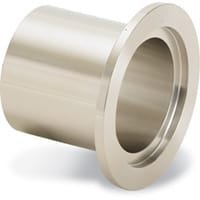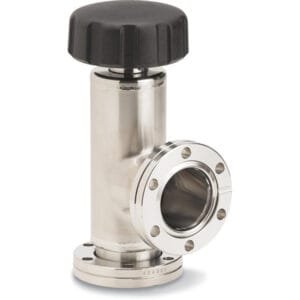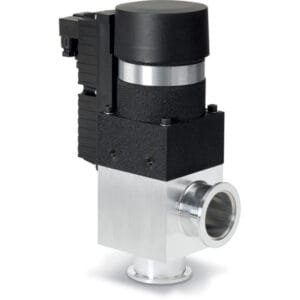KF (QF) HV Half Nipples (Aluminum 6061-T6): Lightweight and Precise for High-Vacuum System Integration
KF (QF) HV Half Nipples (Aluminum 6061-T6) are essential components for users seeking lightweight, corrosion-resistant fittings in high-vacuum (HV) systems. These half nipples are specifically designed with a single KF (QF) flange, offering a simple yet versatile solution for connecting tubing or custom components to standard vacuum hardware.
Unlike full nipples with two flanged ends, KF (QF) HV Half Nipples (Aluminum 6061-T6) are ideal for applications where only one side requires a vacuum flange—such as port terminations, foreline extensions, or direct connections to welded tubing assemblies. The open end allows for flexible integration through welding, brazing, or mechanical coupling, while the KF flange ensures compatibility with quick-clamp hardware for fast, tool-free installation.
Crafted from aluminum alloy 6061-T6, these half nipples offer excellent strength-to-weight ratio and thermal conductivity. Their resistance to corrosion and oxidation, combined with ease of machining, makes them particularly suitable for applications in non-corrosive or inert gas environments. Whether used in experimental vacuum setups, optical instrument chambers, or lightweight vacuum frame systems, these components contribute to reduced system mass without compromising vacuum integrity.
As part of TFM’s commitment to vacuum system performance, each KF (QF) HV Half Nipple (Aluminum 6061-T6) is precision-fabricated using vacuum-rated tubing and flanges. The clean internal finish ensures minimal outgassing and particulate generation, supporting vacuum conditions down to 10⁻⁶ Torr or lower, depending on the assembly.
Standard sizes and lengths are available to meet common system requirements, but TFM also provides customization options for users with unique dimensional or performance needs. Whether you need a special tube diameter, custom length, or modified flange design, our engineering team can deliver a tailored solution for your high-vacuum system.
In summary, KF (QF) HV Half Nipples (Aluminum 6061-T6) are a smart choice for engineers and technicians seeking lightweight, adaptable fittings for high-vacuum infrastructure. Their durability, compatibility, and ease of integration make them a staple in both permanent and modular vacuum system designs.





Reviews
There are no reviews yet.